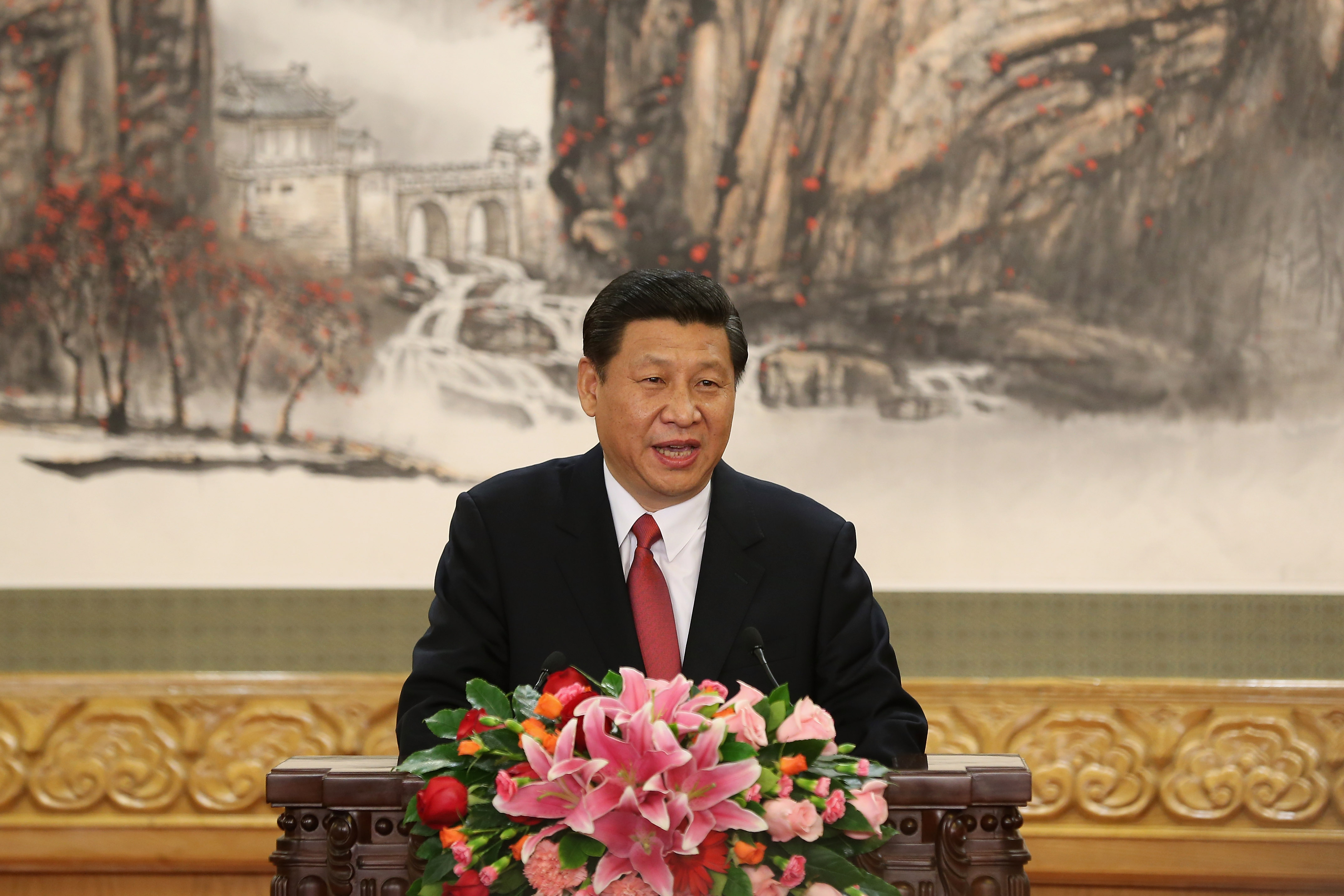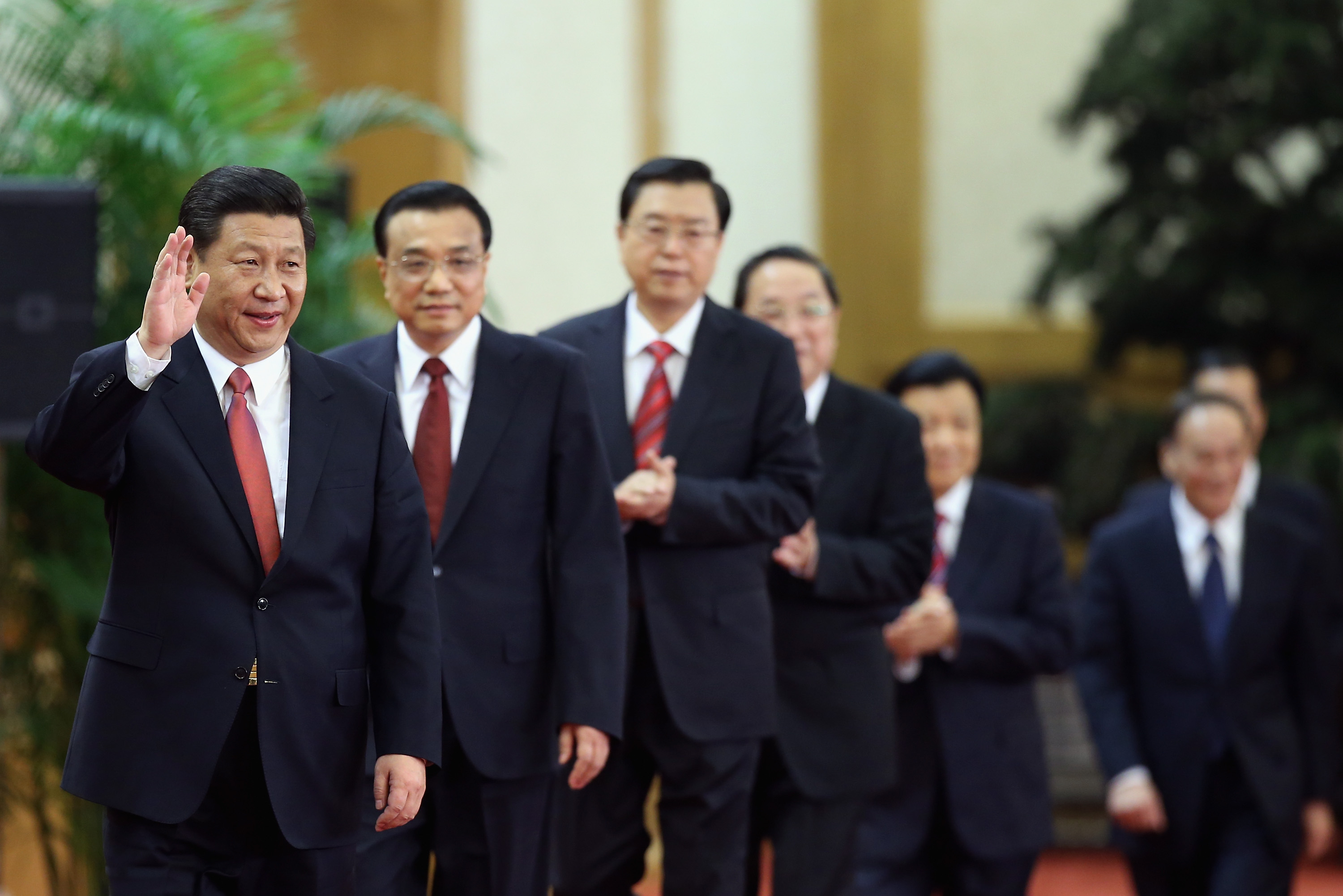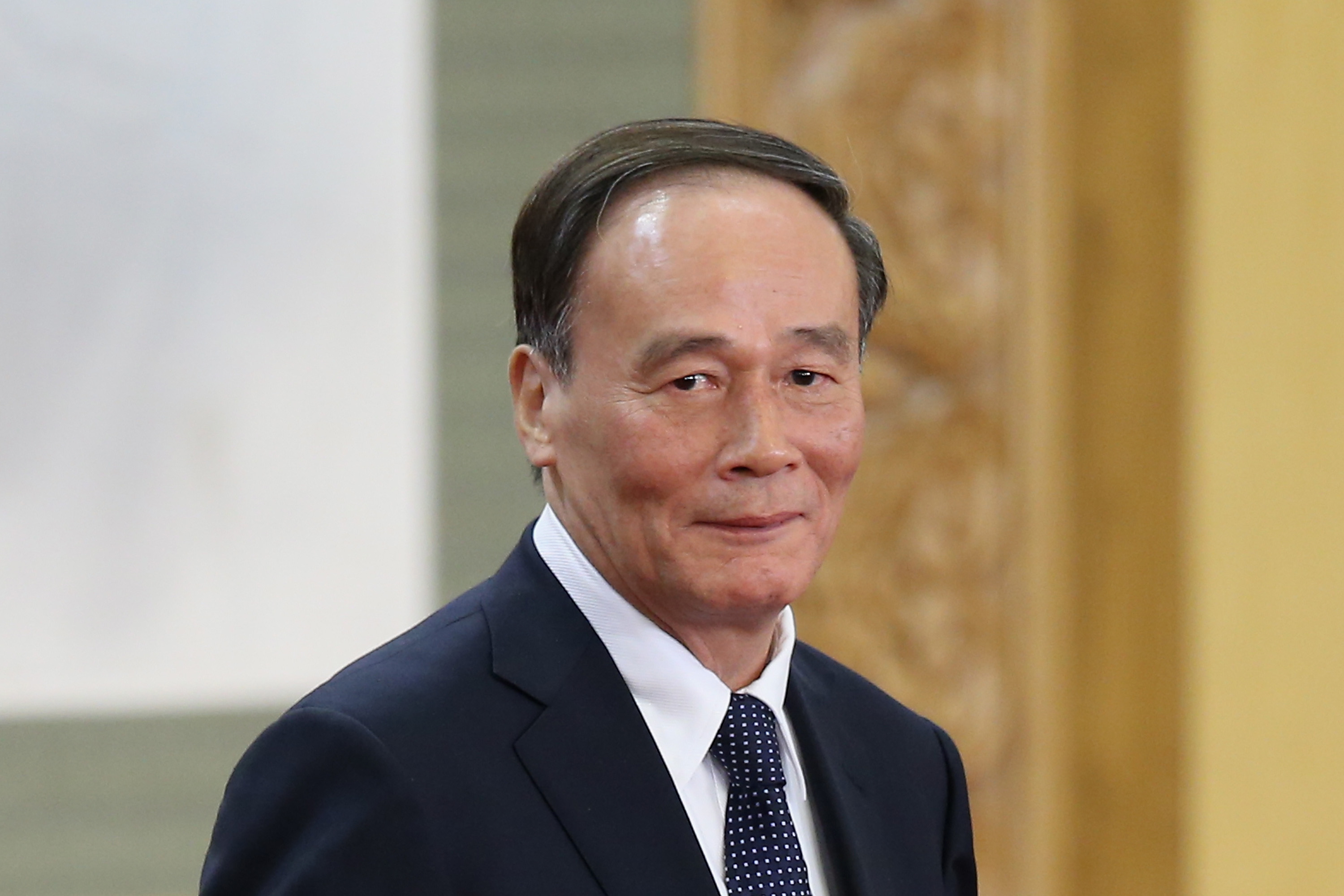The event that will determine the course of China’s future five years will kick off on Oct. 18.
Held twice-a-decade, no single political event is more closely watched by China observers. Called the 19th Party Congress, it is the formal leadership-selection process for the Chinese Communist Party.
Some 2,300 delegates from China’s ruling elite, including state leaders, top party officials and military generals will attend the week long congress. They will select:
- Around 200 full members and around 100 “alternate” members of the Party’s Central Committee
- Members of the Politburo — currently 25 officials from China’s most important cities, provinces, military branches, and governing bodies
- Members of the top leadership body, the Politburo Standing Committee (PSC)
- Members of the anti-corruption watchdog the Central Commission for Discipline Inspection (CCDI)
- General Secretary of the Communist Party
In theory, the Congress serves as China’s answer to national elections, a forum to vote on policies, revise the party’s charter and replace top leaders. In practice, however, the big decisions are hashed out by party elders and sitting leaders over months of secret meetings and handshake deals.
This year’s event will mark the halfway point of party chief Xi Jinping’s expected tenure. He has rapidly consolidated power since the 18th Congress in 2012, where he was elevated to the General Secretary's Post. He will preside over this Congress as its anointed "core" leader.
Here are 5 things to look out for:
1. The question of succession
While leadership arrangements beyond 2022 are not on the official agenda for discussion, all eyes are on signs that may indicate that Xi will carry on beyond his second term.
According to Chinese law, the Chinese President (a title which Xi holds) cannot serve more than two consecutive terms. However, there are no legal limits on the tenure of the Party General Secretary and it is customary for a General Secretary to serve only two terms, meaning that Xi is expected to step down in 2022.
 Chinese Vice President Xi Jinping, one of the members of new seven-seat Politburo Standing Committee, delivers a speech after being appointed the new Communist Party of China leader, at the Great Hall of the People on November 15, 2012 in Beijing, China. (Photo by Lintao Zhang/Getty Images)
Chinese Vice President Xi Jinping, one of the members of new seven-seat Politburo Standing Committee, delivers a speech after being appointed the new Communist Party of China leader, at the Great Hall of the People on November 15, 2012 in Beijing, China. (Photo by Lintao Zhang/Getty Images)
Given Xi’s concentration of power, there has been much speculation that he may attempt to stay on for a third term. He could amass enough power at this Congress to choose his own successor, or break from recent convention and stay on for a third term.
The Congress will give important indications of whether or not that is in the cards. The two key things to watch are:
- Whether or not a successor is appointed
- Whether or not current retirement rules are amended (see point 2 and 3).
What's the big deal: Leadership transitions in the Party have historically been difficult, with only the past two – in 2002 and 2012 – resembling an institutionalised process. But it is still very much a system based on precedents and not rules.
The shock downfall of Politburo member Sun Zhengcai, once seen as a potential future premier, in July and his subsequent expulsion from the party was the strongest signal yet that Xi is unwilling to accept the decisions of his predecessors, and seeking to control succession.
The upcoming Congress is Xi's chance to overhaul the top leadership and begin his second term with a team stacked with trusted allies and followers.
- If there's an indication of a successor in the PSC after the Congress, it would be a sign that Xi plans to follow precedent and step down in 2022.
- If not, it will be the clearest sign yet that Xi is eyeing a third term as the party boss that would start in 2022.
2. The size of the Politburo Standing Committee (PSC)
The most powerful governing body in China is the Politburo Standing Committee (PSC) of the Communist Party. It currently consists of seven men, but its size and composition has changed over time. For instance, during the Hu Jintao years (2002-2012), the PSC had nine members. For most of the 1980s, it had only five.
According to retirement norms (also known as the "67 up, 68 down" rule ) , five of them will have to step down after this Congress.
After months of speculation and secretive horse-trading, the members of the PSC, old and new, will file onto a stage inside Beijing’s Great Hall of the People to "meet the press".
 (L-R) Members of the new Politburo Standing Committee Xi Jinping, Li Keqiang, Zhang Dejiang, Yu Zhengsheng, Liu Yunshan, Wang Qishan and Zhang Gaoli greet the media at the Great Hall of the People on November 15, 2012 in Beijing, China. (Photo by Feng Li/Getty Images)
(L-R) Members of the new Politburo Standing Committee Xi Jinping, Li Keqiang, Zhang Dejiang, Yu Zhengsheng, Liu Yunshan, Wang Qishan and Zhang Gaoli greet the media at the Great Hall of the People on November 15, 2012 in Beijing, China. (Photo by Feng Li/Getty Images)
The unveiling will only happen on the last day of the highly-choreographed Congress spanning over several days. Which standing committee member gets which portfolio depends on the order members appear for the first time together on stage.
What's the big deal: There has been speculation that Xi might seek to reduce the size of the PSC from seven to five.
Variations in its size are important as the numbers game can decide which faction of the Party has the upper hand in affecting top-level decision making.
Whether Xi is able to fill the PSC and the wider Politburo with his allies will reveal the true extent of his power – and it will also have implications for how his policy agenda is carried out in the coming five years.
A smaller PSC makes it a more efficient body – and gives Xi more power, as he will have less top-tier rivals to deal with.
3. The future of Xi's key ally Wang Qishan
There have been persistent rumours that Xi may seek to have the 69-year-old Wang Qishan, his key ally in the PSC and enforcer of his signature anti-graft campaign stay on, either in his current role or as premier taking on an economic portfolio, should Li Keqiang step down.
 Chinese Vice Premier Wang Qishan, one of the members of new seven-seat Politburo Standing Committee, greets the media at the Great Hall of the People on November 15, 2012 in Beijing, China. (Photo by Feng Li/Getty Images)
Chinese Vice Premier Wang Qishan, one of the members of new seven-seat Politburo Standing Committee, greets the media at the Great Hall of the People on November 15, 2012 in Beijing, China. (Photo by Feng Li/Getty Images)
Speculation about Wang’s future role intensified last month, when he met Prime Minister Lee Hsien Loong and US President Donald Trump’s former chief strategist, Steve Bannon, in Beijing. Wang met regularly with world leaders when he was vice-premier, but has not had a government role for five years.
What's the big deal: If Wang, who some see as the second most powerful politician in China remains in the PSC, he will shatter a norm followed since 2002 that has seen all members of the PSC aged 68 or older at the time of a party congress step down.
Wang remaining as a member of the PSC would potentially benefit Xi, as it could legitimise Xi's seeking of a third term as party chief at the following leadership reshuffle in 2022, when he would also be 69.
[related_story]
4. The political ideology of Xi Jinping
Traditionally, top leaders would make theoretical contributions to official Party ideology. Their authority and legitimacy are enhanced by the adoption of their pet theories.
Two things to watch at the upcoming Congress:
- Whether Xi’s contribution includes his name. Only Mao Zedong and Deng Xiaoping have eponymous theoretical contributions (Mao Zedong Thought and Deng Xiaoping Theory, respectively) enshrined in the Party Constitution. Contributions of the two most recent leaders Jiang Zemin (The Three Represents) and Hu Jintao (The Scientific Concept of Development) did not include their names, reflecting their relatively less important status.
- Whether Xi’s theory (regardless of the name) is not just added, but fully enshrined in the Party Constitution. With the exception of Mao, previous leaders had their philosophies officially designated as a “guiding theory” in the Party Constitution only after they had stepped down.
What's the big deal: The extent of Xi’s grip on power may also be seen in revisions to the Party Constitution, in particular if he gets one of his signature slogans describing his theory -- or perhaps even his name -- written into the text.
An eponymous theory fully enshrined in the Constitution would officially mean that Xi has consolidated a level of power unprecedented since Mao, and establish him in the same league as Mao and Deng.
It will also reflect a consensus among the Party elite that a powerful leader is needed. Should he fail, it would imply that there are still resistance among segments of the Party elite.
5. The Party work report
The almost week-long event begins with a speech by Xi – in his role as Party General Secretary delivering a work report summarising the Party’s achievements in the past five years and laying out its priorities for the coming half-decade.
Looking back at the last Party Congress in 2012, we can see that much of what has happened in the past five years was foreshadowed in the previous report. The main theme then centered on solidifying the domestic and international foundations for China’s development as a great power.
What's the big deal: The Party work report is best conceptualised as a wish-list of goals in the coming term.
It is the most authoritative document in the Chinese system, and all policy flows from it. It is also the best place to detect shifts in policy and new priorities for the world’s second-largest economy.
Top photo from Getty Images
If you like what you read, follow us on Facebook, Instagram, Twitter and Telegram to get the latest updates.

